Mestni Muzej (City Museum) Ljubljana
Ljubljana’s City Museum was the only museum I visited during my time in Slovenia (outside of small castle museums). I don’t think I could have chosen better, as the City Museum gives a perfect introduction to Ljubljanan history, culture and people.
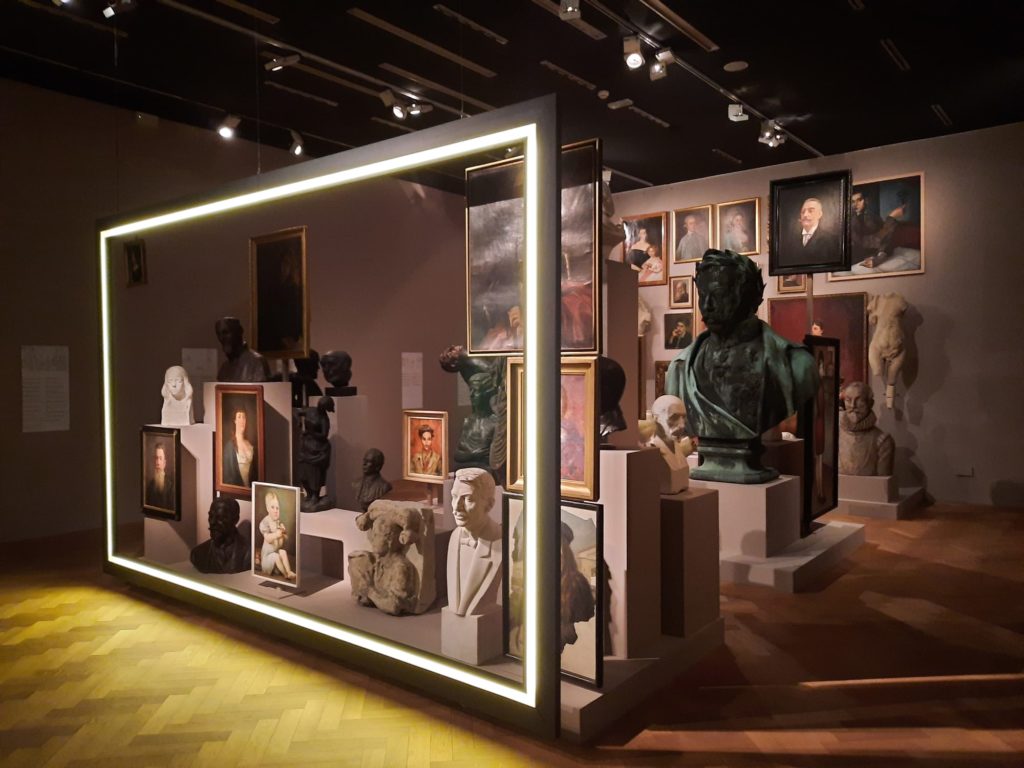
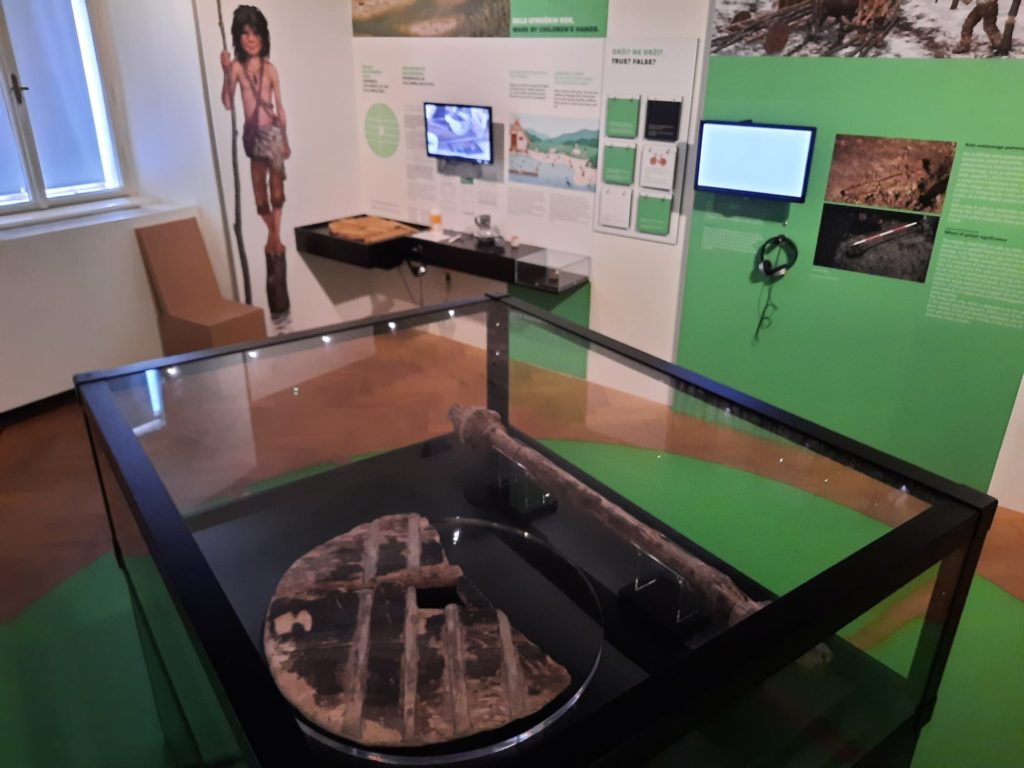
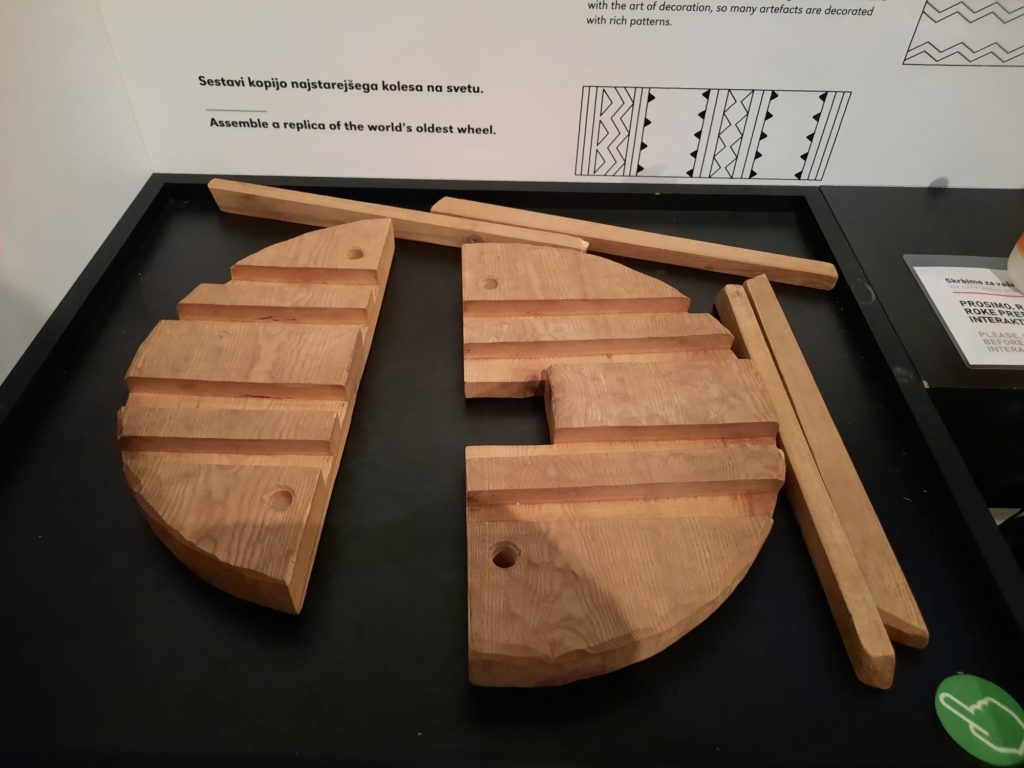
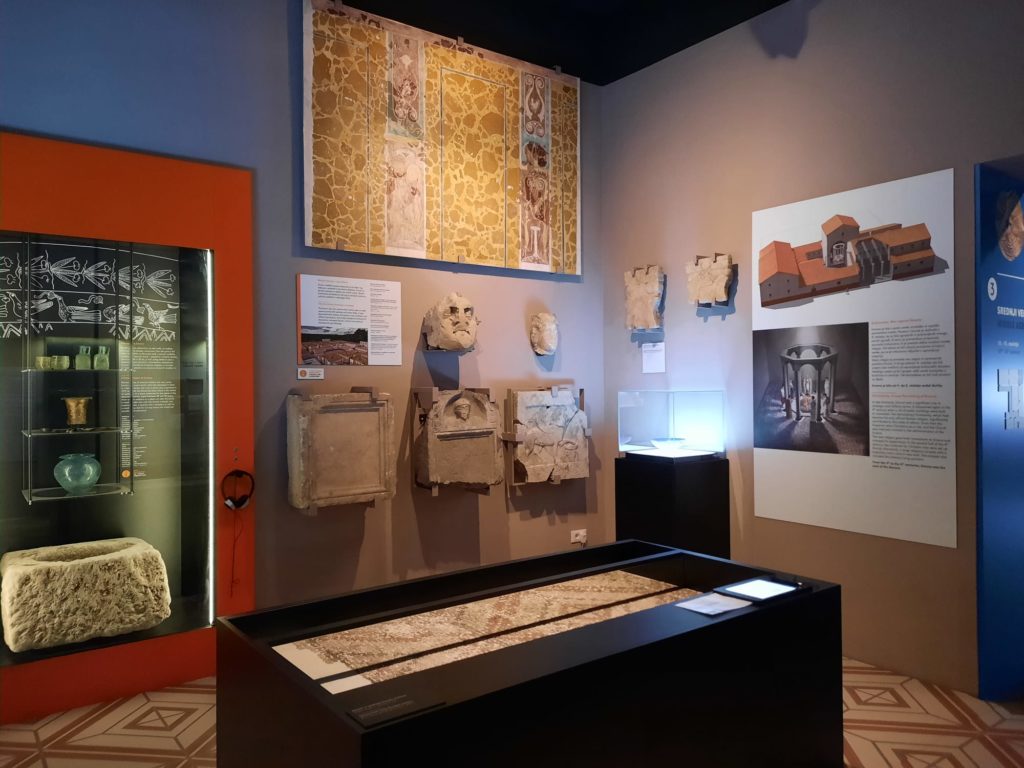
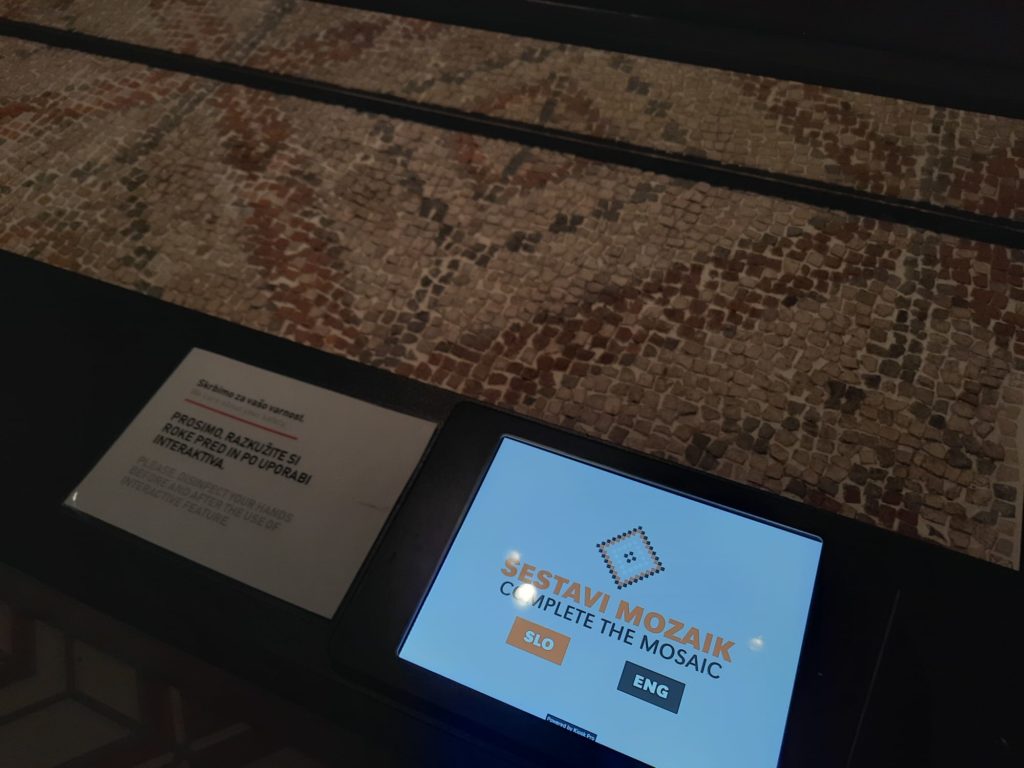
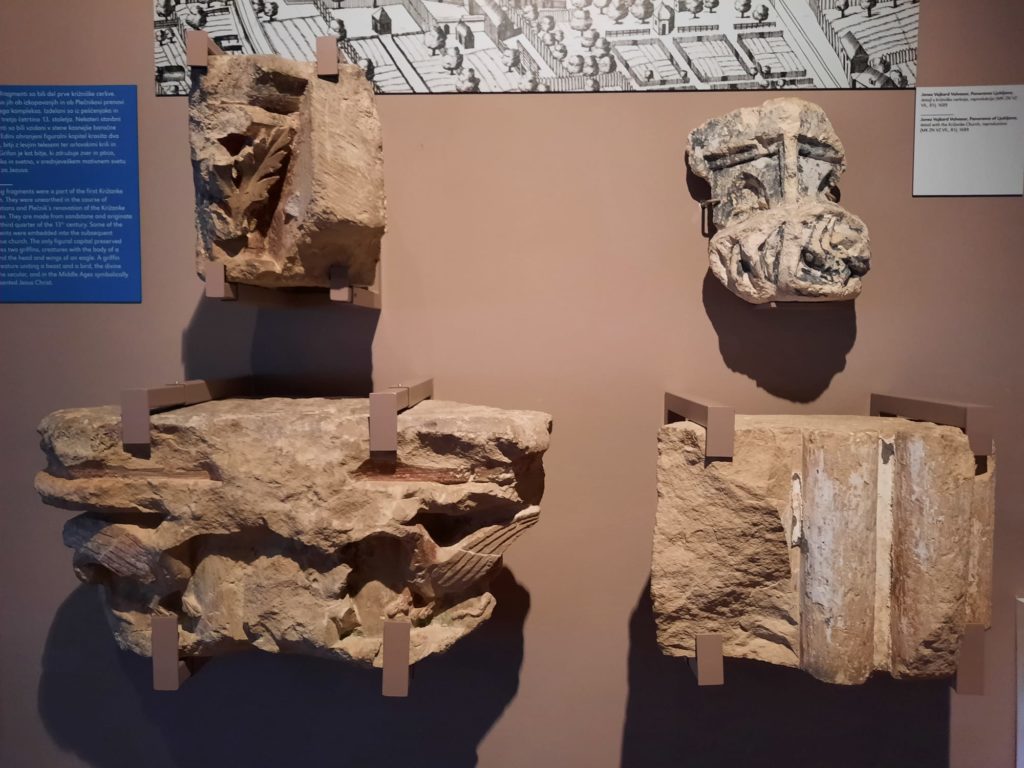
Mestni Muzej (City Museum)
I really love a good city museum. There are generally a lot of interesting angles to explore the history and life of a city. And many cities around the world have centuries (if not millennia) of history to explore. Ljubljana is one such city. We learned in the last post on the blog that Ljubljana started life as a Roman settlement named Emona. Life in the Ljubljana area goes back even further, however. The Ljubljana Marshes were once a lake. Neanderthals lived in the area first, followed by Ice Age hunters as the marshes formed. They were nomads to begin with, before permanent habitation emerged from the 5th millennium BC.
The City Museum starts its story here. Or it almost does. The first room you come to in the permanent exhibition is an absolutely brilliant museum mission statement in the form of a project by a contemporary artist. The first two images above are of this installation, a collaboration between local artist Damijan Kracina and the museum. The wall text sets out exactly what this mission statement entails, projecting “the idea that there is no city without people and their faces.” Thus it is faces that have been brought together: paintings, sculptures and decorative objects. From the entrance it looks like a 2D tableau, but as you move around it you discover more and more of the city’s inhabitants. It’s a process of peeling back layers to reveal stories, just as you will in the museum at large.
So onwards then to those early inhabitants I talked about. They are up in the first of half a dozen colour-coded galleries for different historic periods. Marshes are excellent at preserving organic as well as inorganic materials, so there are some cracking objects on display. The world’s oldest wheel with an axle, for example, made of two joined wooden plates. As we will find throughout, there are also games/interactive elements. And a video by a local foodie who has recreated a modern recipe taking inspiration from prehistoric food sources. Very nice touches.
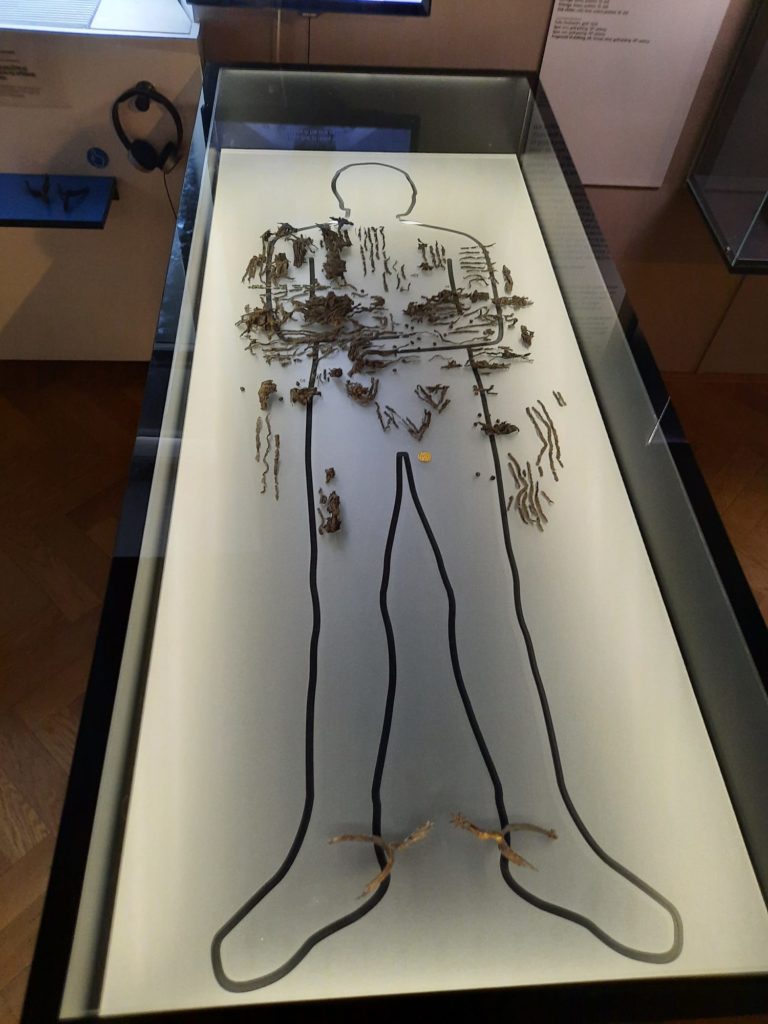
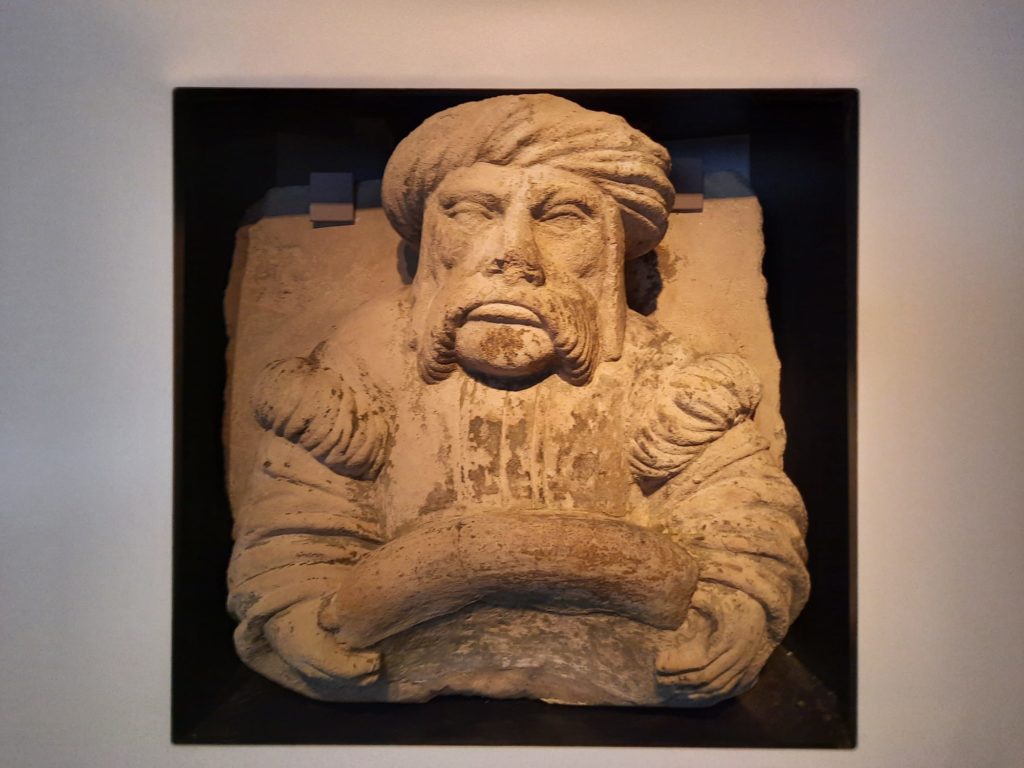
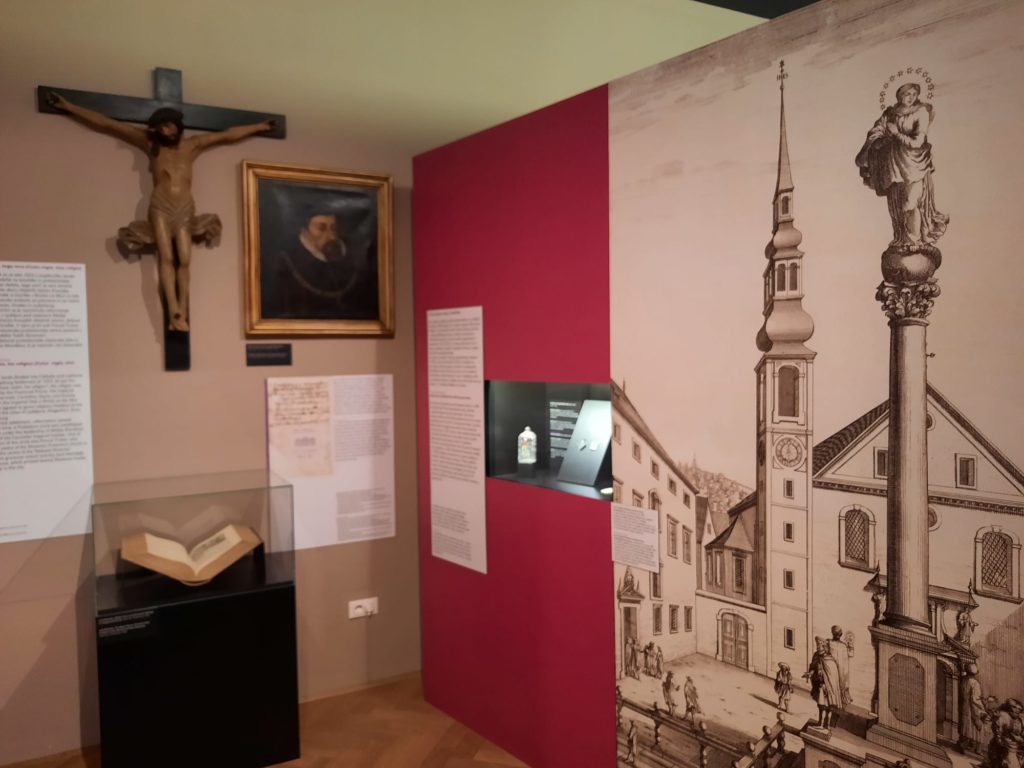
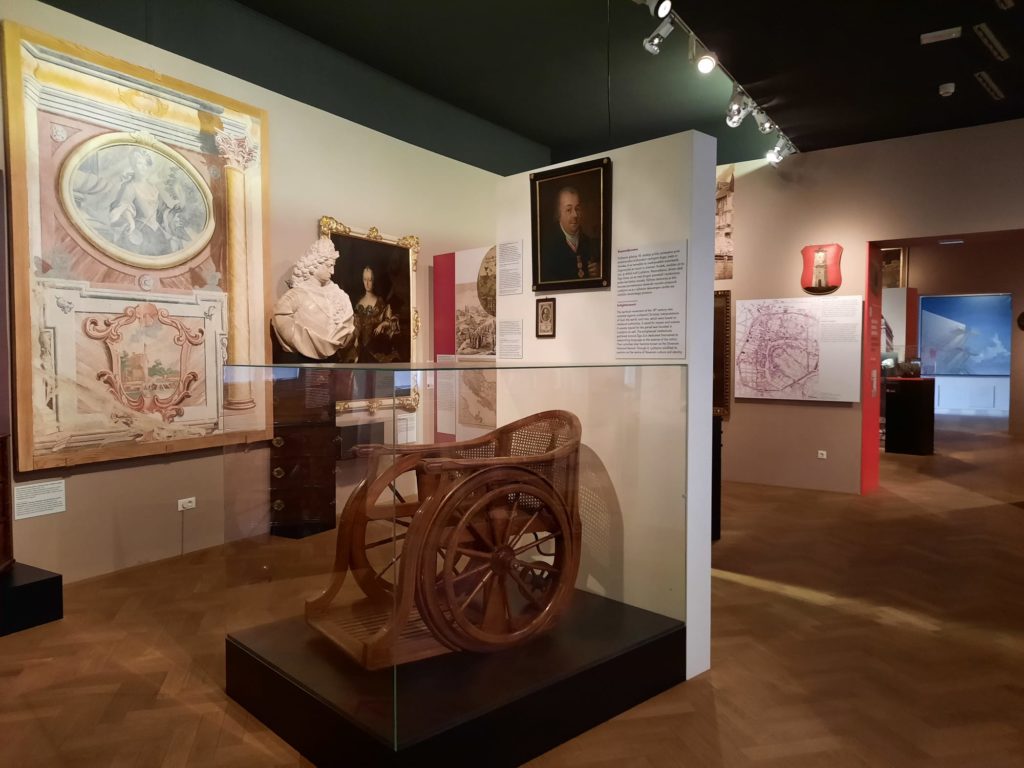
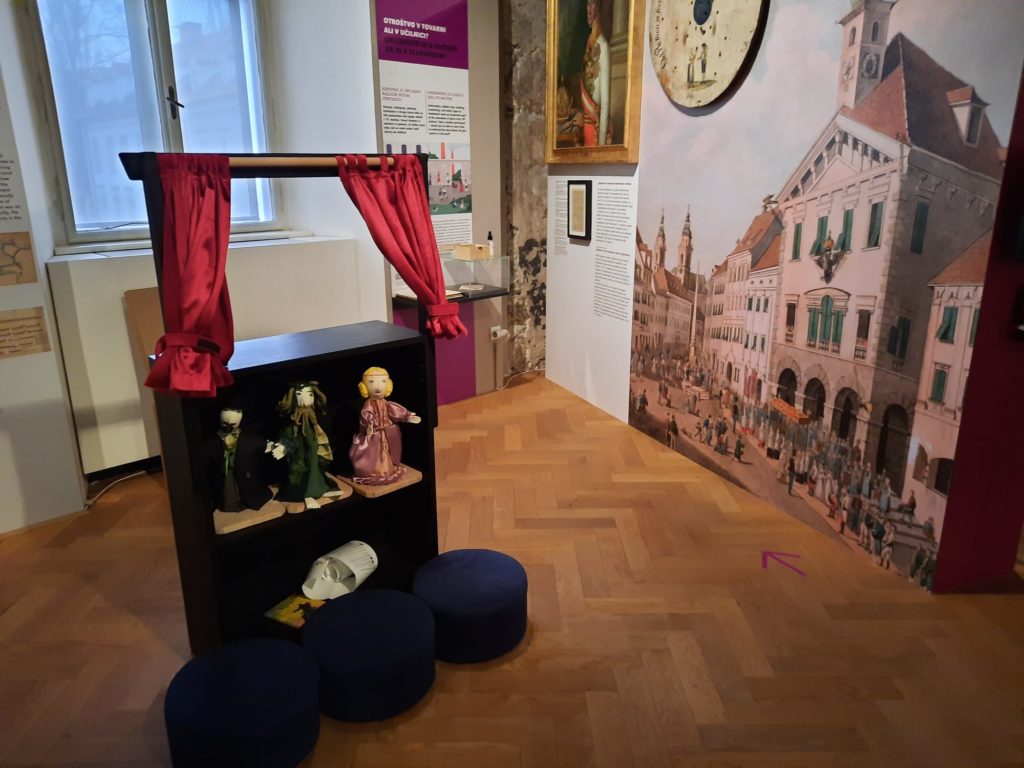
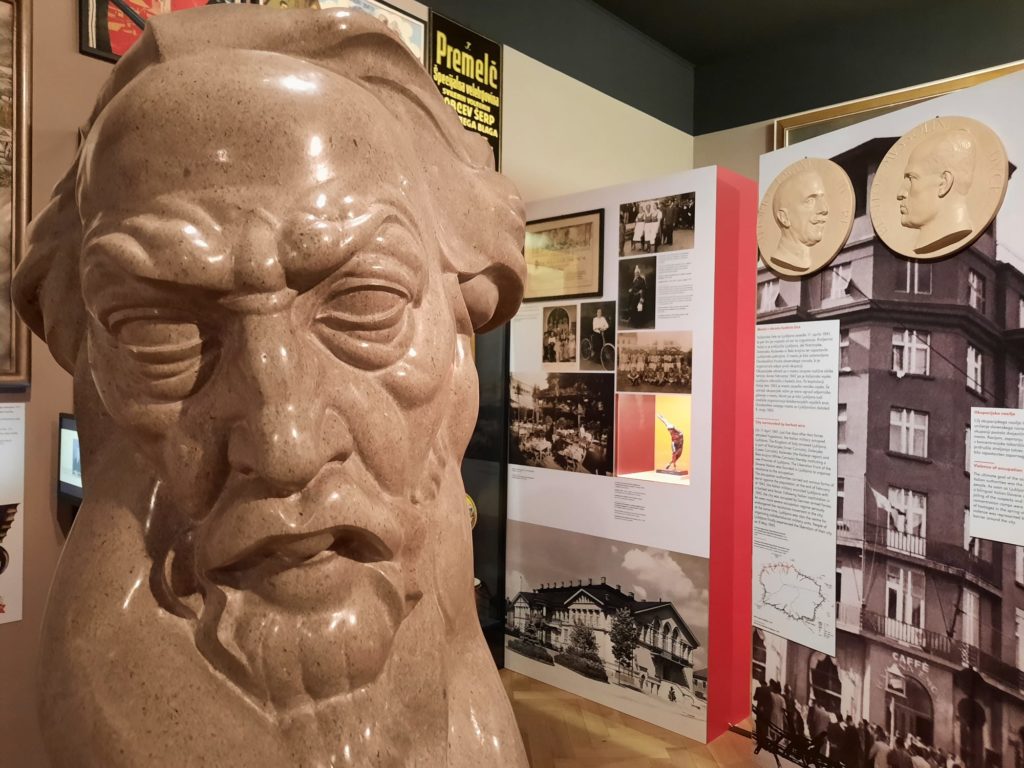
Slices Of History
So onwards from our Ice Age/prehistoric friends. Next up is Roman Emona. I had a fun time with the games here, including a digital mosaic puzzle. Emona seems to have had some great glassware, some of which has survived for us to enjoy. And there were also human remains: unexpectedly, at least some Roman-era Ljubljanans were into skull-shaping. There is an accompanying video which explains what we can learn by studying these remains. They are nonetheless fairly discretely displayed.
After Antiquity comes the Middle Ages. Here we learn about Ljubljan after the fall of the Roman Empire. This is a story about decline and retreat to defensible locations, followed by growth in the form of planned feudalisation. The territory came under Habsburg rule from 1335. It was a trade centre, with the usual skilled workers, markets, cloisters and so on. In this section we see objects like surviving threads from a silk and silver outfit (not bad for a knight). We also see a representation of a Turkish man. There were Turkish incursions into Slovenian territory from 1415.
As we move through the centuries, the next sections are Modern History, followed by Modern and Contemporary History (two moderns, but it makes sense when you see it). The first section is about the Baroque period in art, Protestantism in religion, and the Enlightenment in philosophy and learning. This was my least favourite section, although there was a puppet theatre which looked quite entertaining. You probably have a better idea of what the Modern and Contemporary History section entails. Ljubljana suffered a major earthquake in 1895, which reshaped the city and marks a starting point for this second modern era. Then there were the political upheavals, from World Wars to the formation and collapse of Yugoslavia. We end on a joyous note, however, with a little yellow car not unlike a VW Beetle, which I imagine was once a common sight here.
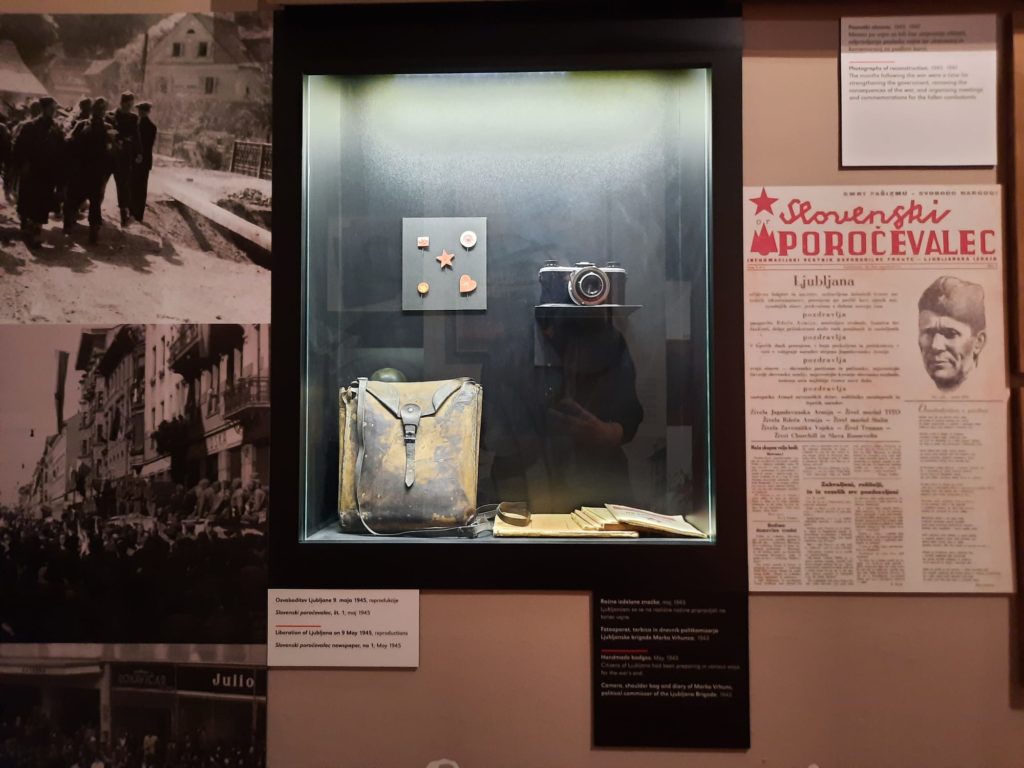
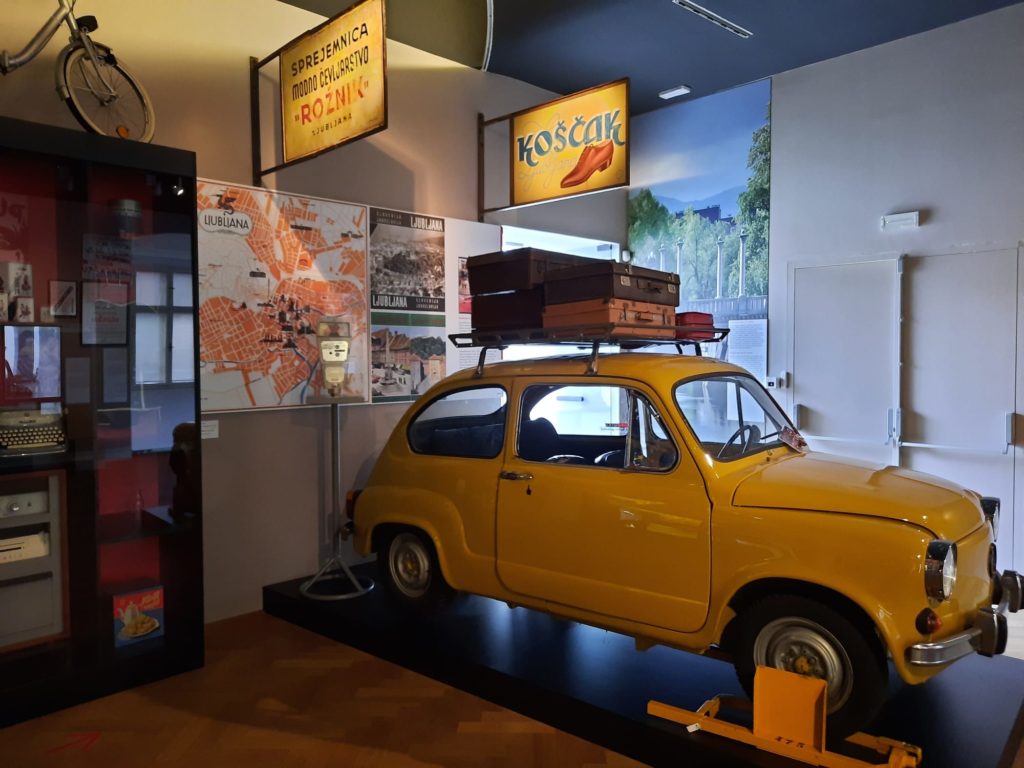
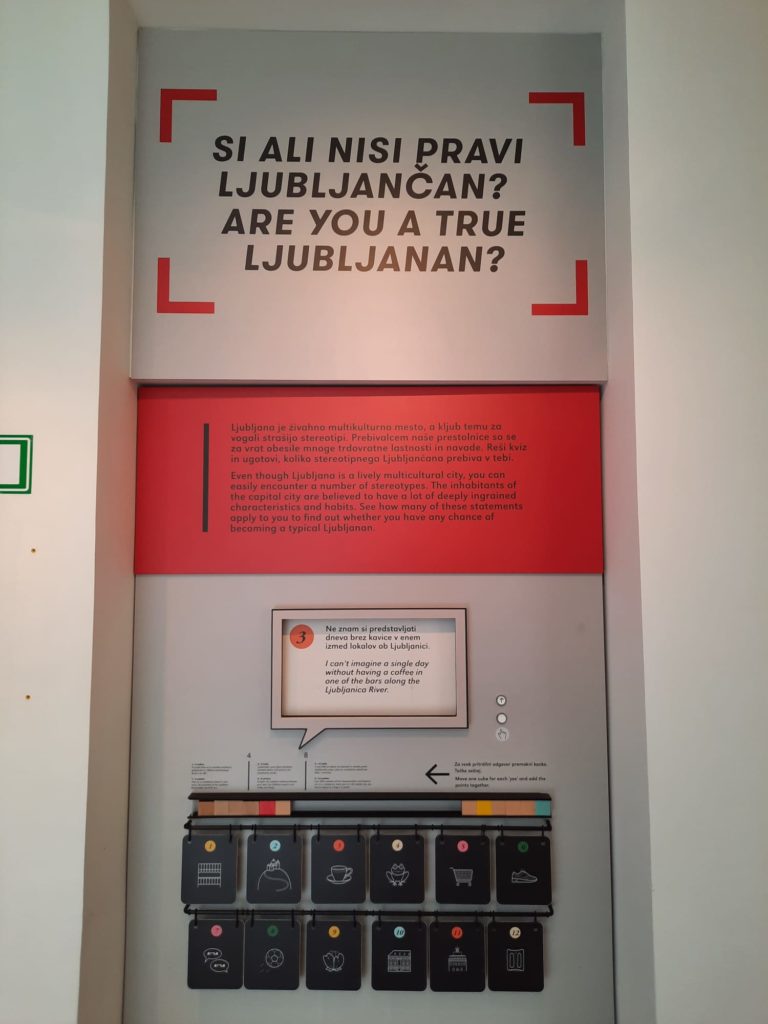
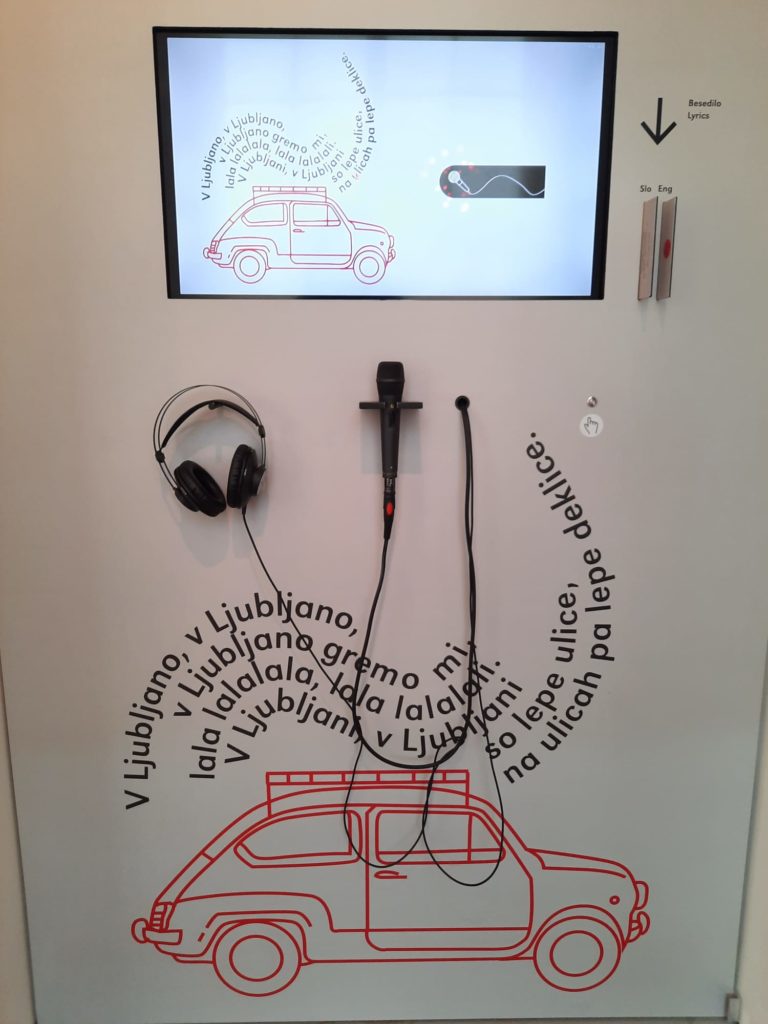
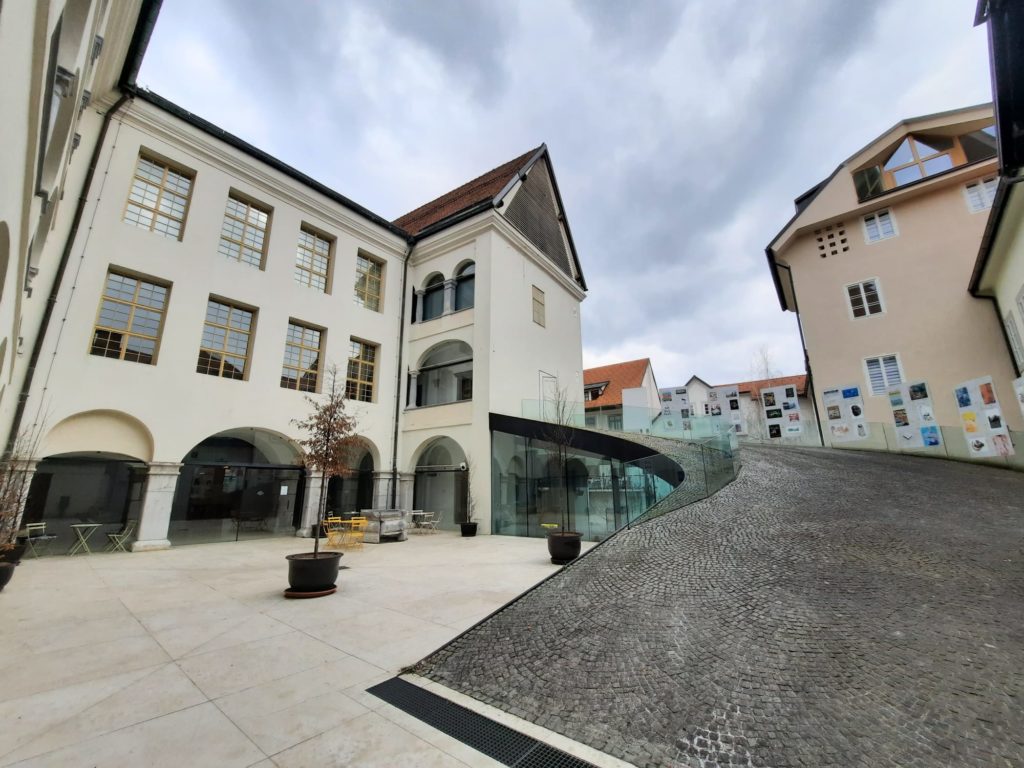
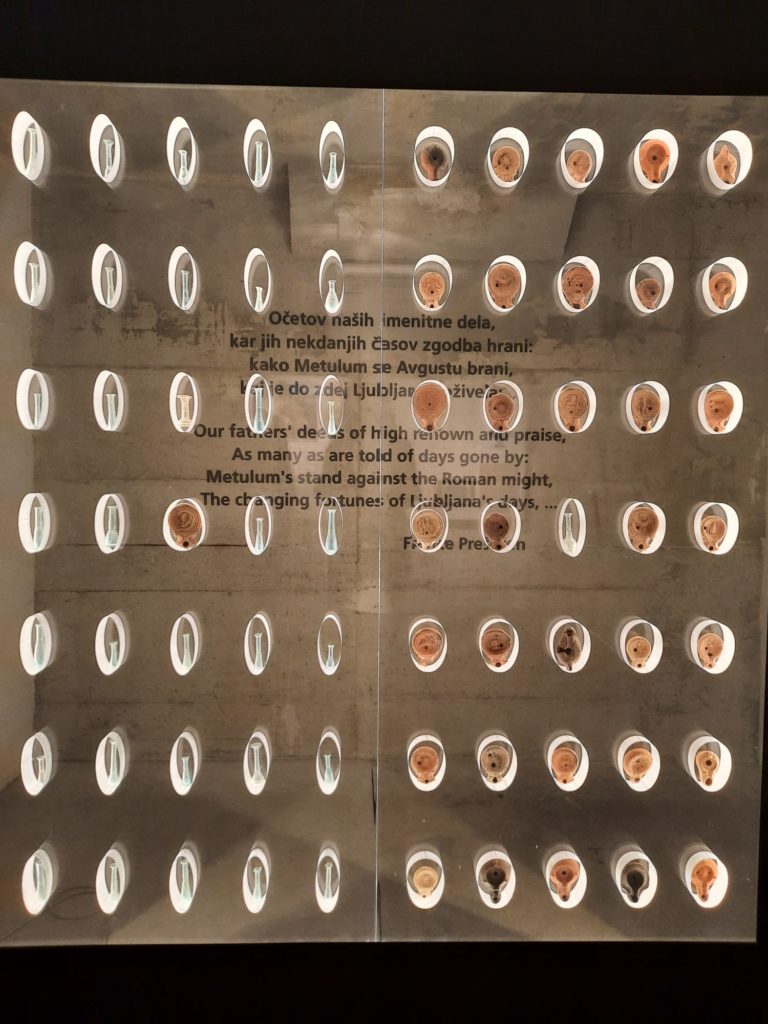
What Else Is On View At The City Museum?
The two sections above outline the permanent exhibition, which is the heart of the museum and is the bulk of the first floor. As you exit there are a few final fun elements, including a karaoke opportunity which I (for once) didn’t partake in. And a sort of little dragon’s den which was intriguing but occupied when I went past.
Downstairs, there are other permanent features worth mentioning. The museum building is the former Auesperg Palace, Ljubljanan home to the Counts of Auersperg. It became the City Museum in 1935 when the municipality acquired the palace. But anyway, there are two interesting features worth mentioning in conjunction with the building’s past. The first is that you can really get a sense of the former Ausperg Palace from the central courtyard. A cafe overlooks it (or looks up at it really, as the cafe is in the basement), and could be worth checking out.
And then there is what’s underneath the palace. Which is my favourite – archaeological remains! I mentioned archaeological sites briefly in my last post. The Auersperg Palace has a Roman road underneath it, which today has been excavated. It is here that they exhibit a second selection of their Roman-era artefacts, including a display of oil lamps. There’s also a clever display of objects from different periods, displayed like the stratigraphic layers of an archaeological dig.
All in all I highly rate Ljubljana’s City Museum. It is thoughtfully presented, and I like that you can see that their aim is first and foremost creating a connection with local people. That doesn’t stop it being a great resource for tourists to learn more about the city they are visiting. So if, like me, you only have time to visit one or two museums during your time in the city, I recommend you put this one at the top of your list!
Salterton Arts Review’s rating: 4/5
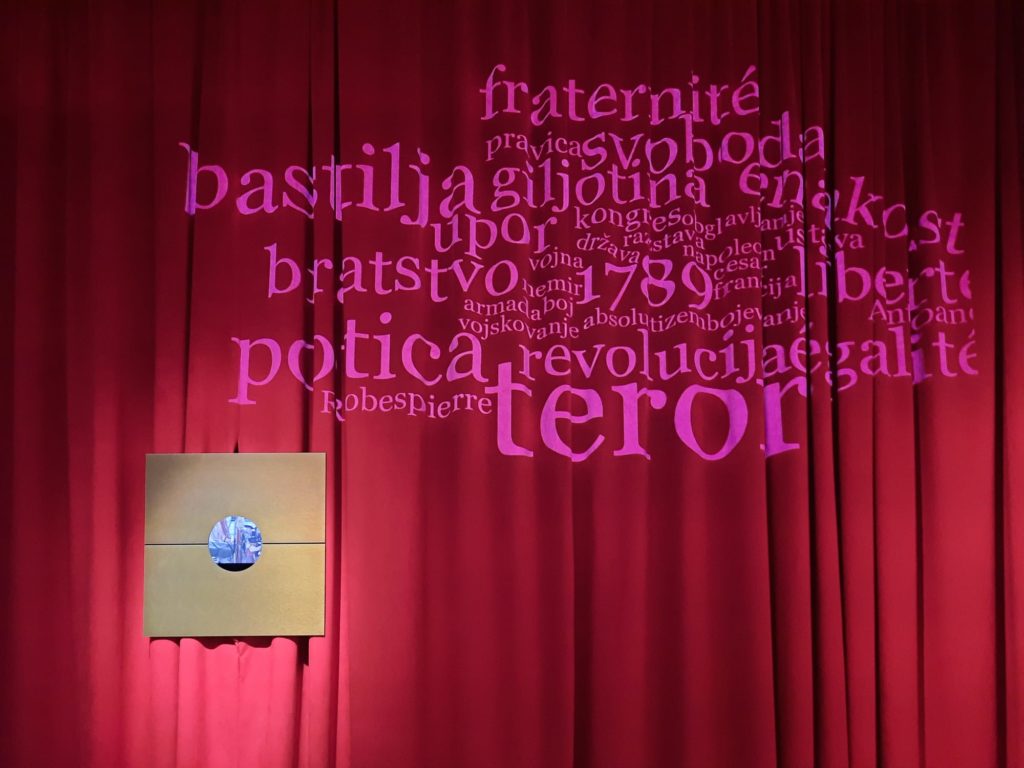
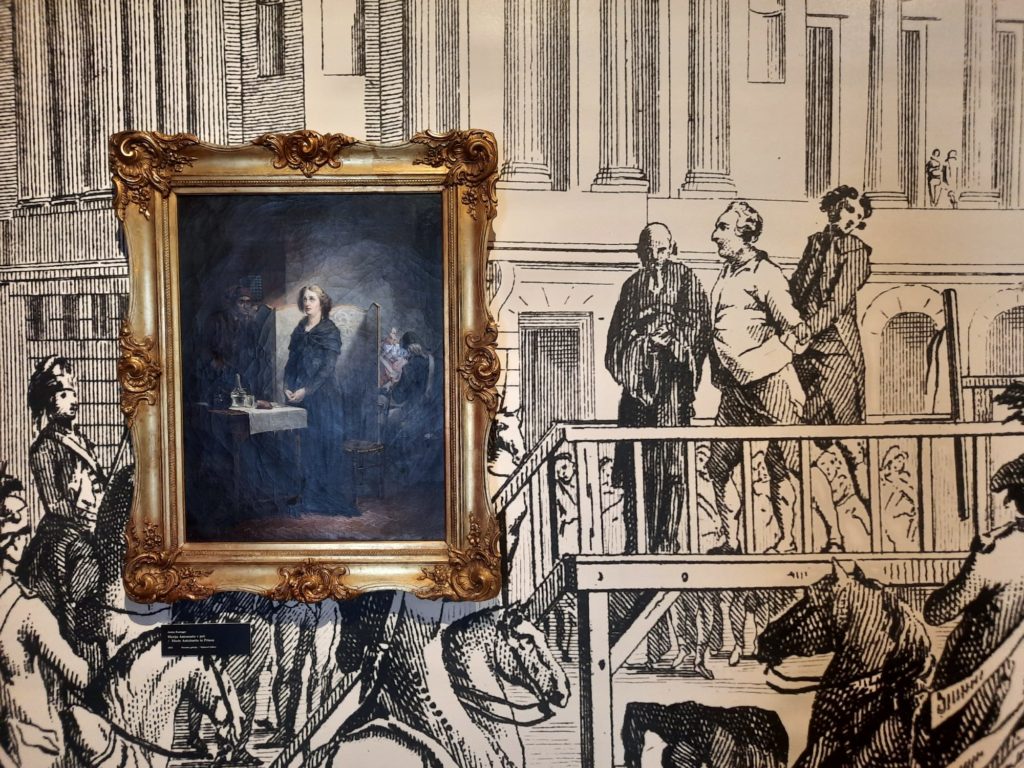
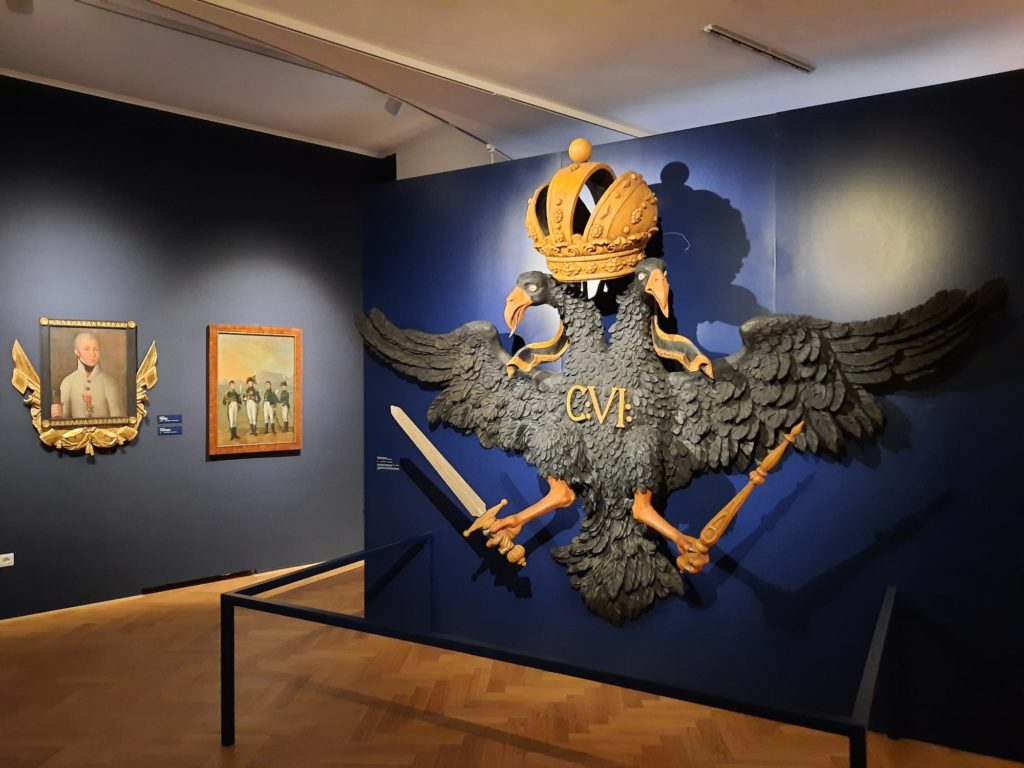
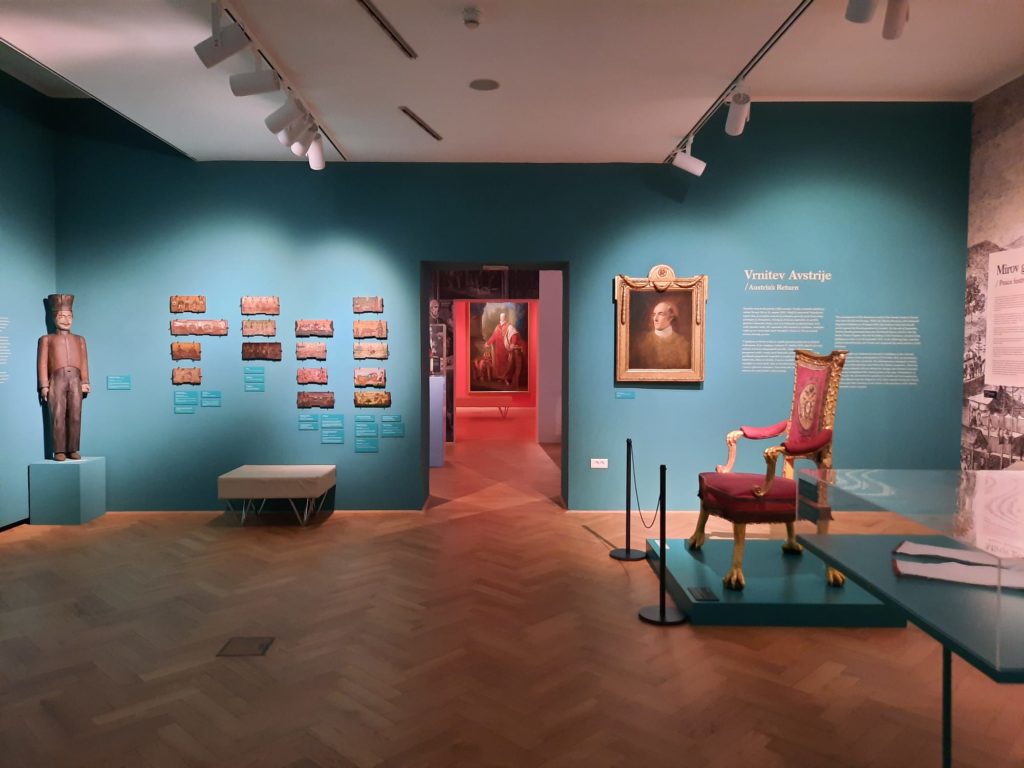
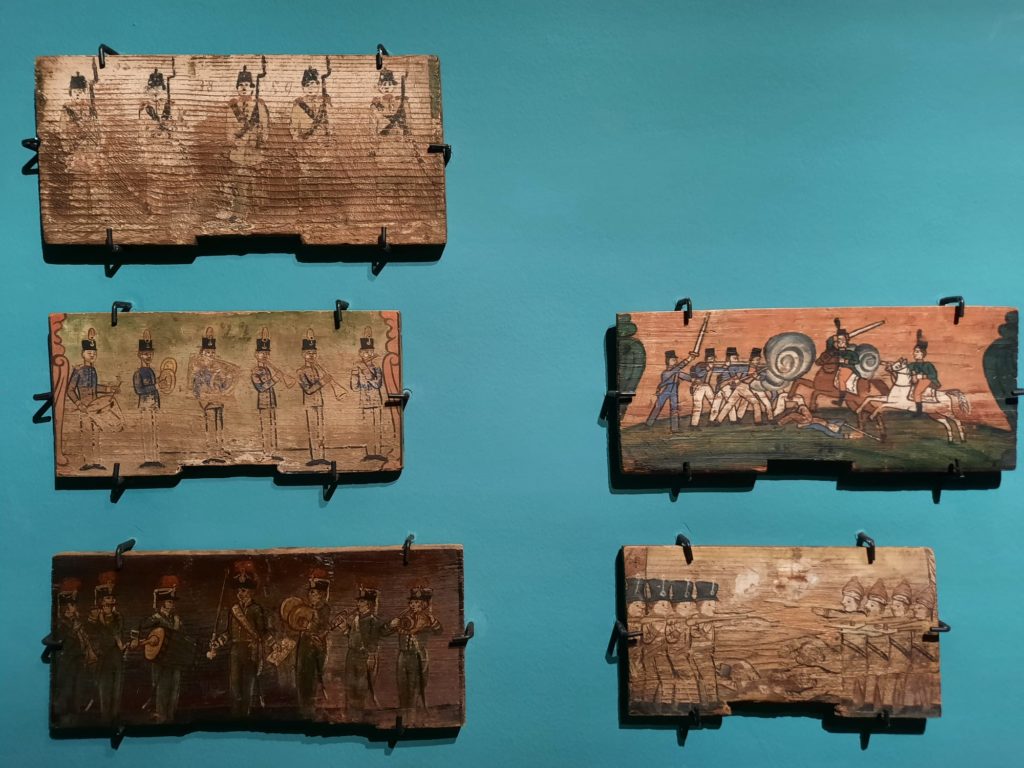
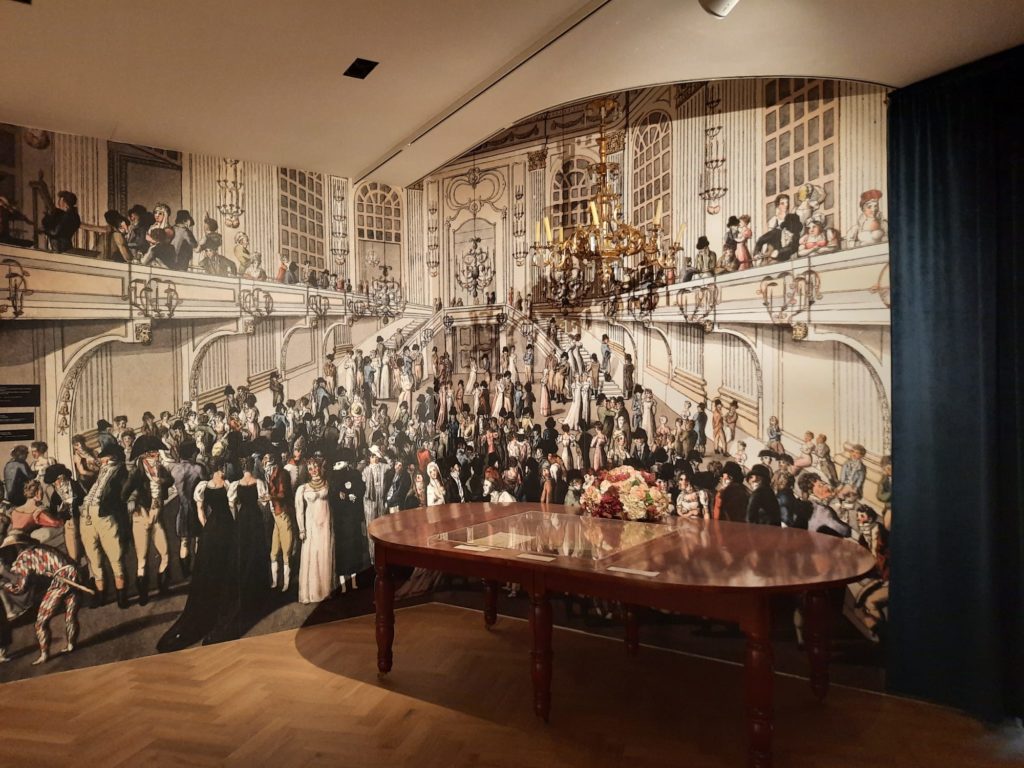
The Red And The Black: Europe At The 1821 Congress of Ljubljana
Just one more quick section before we finish up here. Which is about the temporary exhibition on at the City Museum when I visited. If your visit is after April 2022, feel free to skip this bit unless you’re particularly interested in 19th Century political history.
And disclaimer: I am not. So I mainly flitted around this exhibition looking at their display techniques and some of the objects on view rather than learning about the 1821 Congress of Ljubljana. Let me try to give a quick summary though so we know what we’re all talking about. In 1821, Ljubljana was the capital of Carniola. The Congress didn’t concern Carniola, however, but the Kingdom of the Two Sicilies. Things were still calming down after the Napoleonic period, and there had been a revolutionary overthrow there in 1820. The powers that be (Austria, Russia and Prussia) had had enough of that sort of thing, and were worried that it would threaten political stability in Europe. To cut a long story short, lots of fancy people came to town for the Congress, which was successful in stabilising the Kingdom (it lasted until Garibaldi came along in 1860).
As subjects go, it’s kind of dry. But as you can see in the images above, they have an interesting selection of objects, and display them well. I particularly like the image second from the bottom. Bee keeping is a popular pastime in Slovenia even today, and these are painted panels from beehives. It’s a great record of popular interpretations of historic events. The artists were free and easy with things like uniforms, but the storytelling is very engaging. So overall I think what I’m saying is – don’t go out of your way to see this exhibition unless the subject matter is your jam. But if you’re at the City Museum anyway, pop in for a look as there are a few highlights worth seeking out.
Salterton Arts Review’s rating: 3/5
The Red and the Black on until 24 April 2022
If you see this after your page is loaded completely, leafletJS files are missing.

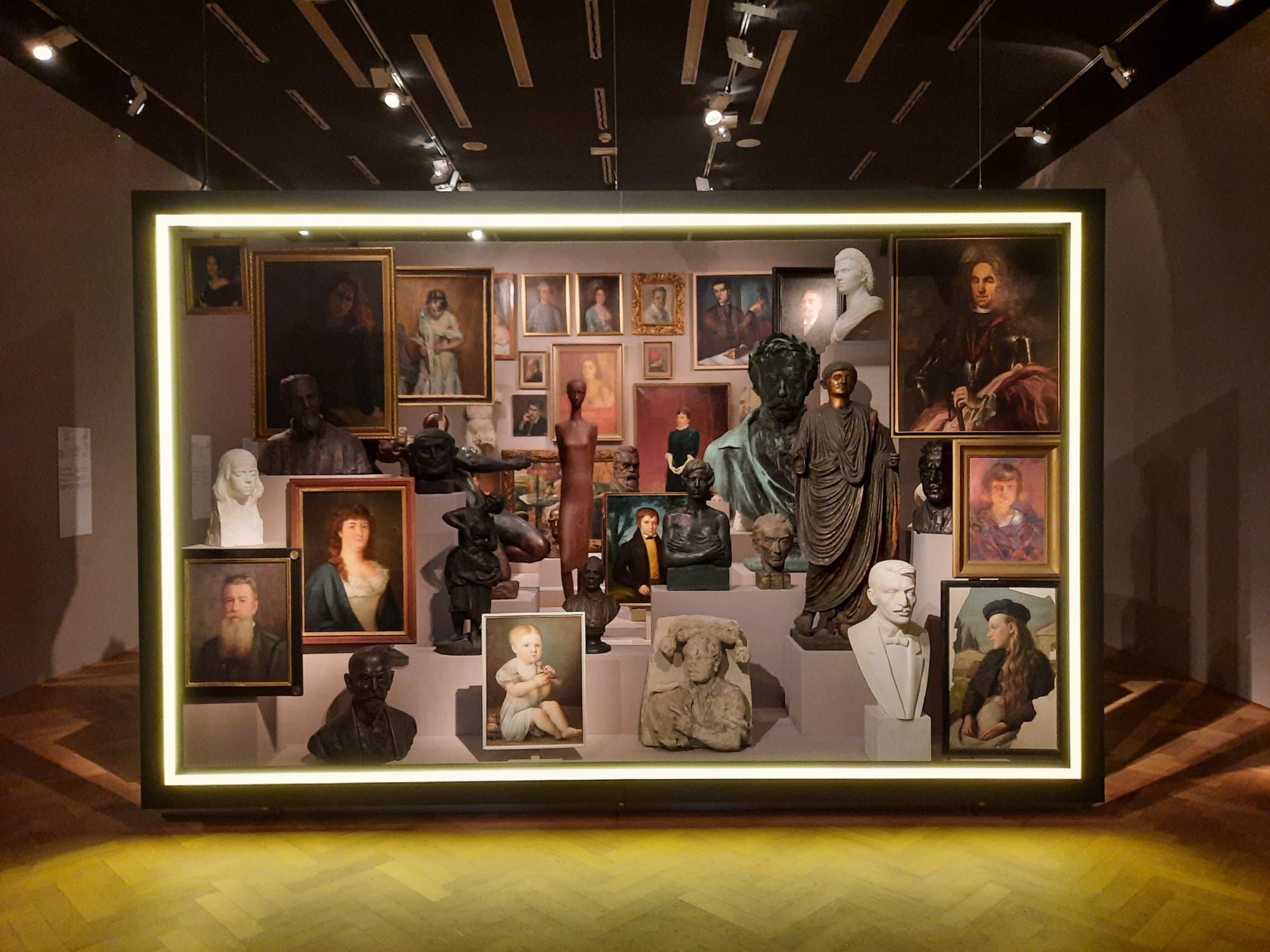
2 thoughts on “Mestni Muzej (City Museum) Ljubljana”